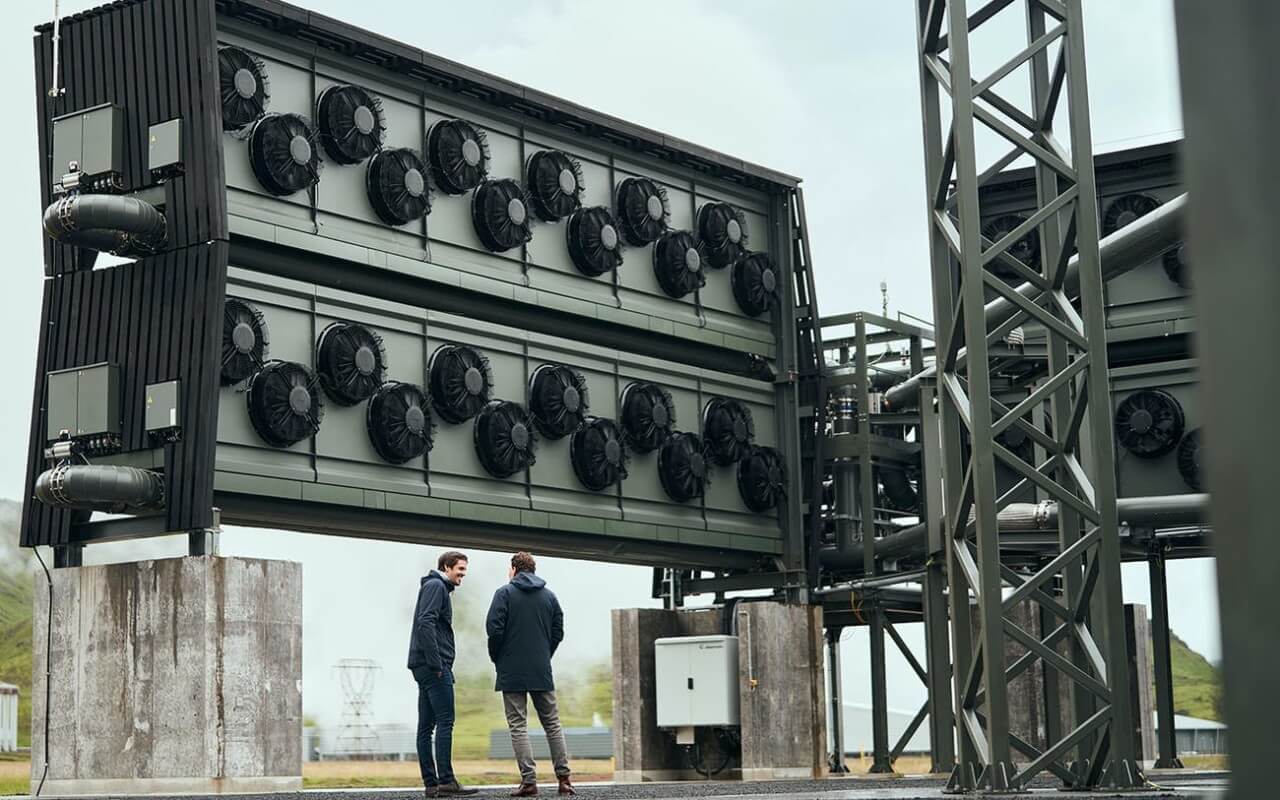Europe has, as of late, become the site of robust environmental technological developments designed to reduce global waste and carbon emissions, from BIG’s waste-to-power plant in Copenhagen to a proposal for a mass timber neighborhood in Sweden. As of last Wednesday, it has also become the site of the latest advancement in carbon capture technology.
On an isolated patch of lava plateau in southwest Iceland, a climate-positive direct air capture plant capable of capturing roughly 4,000 tons of CO2 every year began operation, making it the world’s largest carbon capture facility. Running entirely on renewable energy sourced from a nearby geothermal power plant, it is also the biggest climate-positive facility in the world.
Named Orca, a phonetically similar word to “energy” in Icelandic, the facility was created by Climeworks, a Swiss technology company with a focus on carbon dioxide air capture technology. The facility consists of shipping container-sized prefabricated boxes that are lifted up on concrete footings. Large fans attached to those boxes collect the surrounding air and collect carbon within internal filters. Those filters are heated to free the carbon, allowing it to be pumped beneath the facility into basalt caverns where it will eventually turn to stone.
The facility is arranged within a compact footprint to maintain a minimal presence in the Icelandic landscape. This design also llows Orca to be easily replicated across Iceland and beyond. “Orca, as a milestone in the direct air capture industry, has provided a scalable, flexible and replicable blueprint for Climeworks’ future expansion,” said co-CEO and co-founder of Climeworks Jan Wurzbacher. “With this success, we are prepared to rapidly ramp up our capacity in the next few years. Achieving global net-zero emissions is still a long way to go, but with Orca, we believe that Climeworks has taken one significant step closer to achieving that goal.” And with its first facility falling within a tight 15-month-long construction timeline, it is likely that future versions of Orca can be deployed even more quickly and efficiently.
Though the news of Orca’s operation reflects an important step in combating climate change, as it increases the world’s direct air capture capacity to over 13,000 metric tons, carbon capture technology is not likely to win the fight alone. To put it in perspective, consider that a single coal-fired power plant alone emits more than 300 times more carbon than Orca can capture.
“We need to turn this into a Starbucks, circa 1999, where you see one on every corner,” Peter Psarras, a professor in chemical and biomolecular engineering at the University of Pennsylvania, told Environment & Energy Publishing. “I think this is the future we might see in the next decade.”
